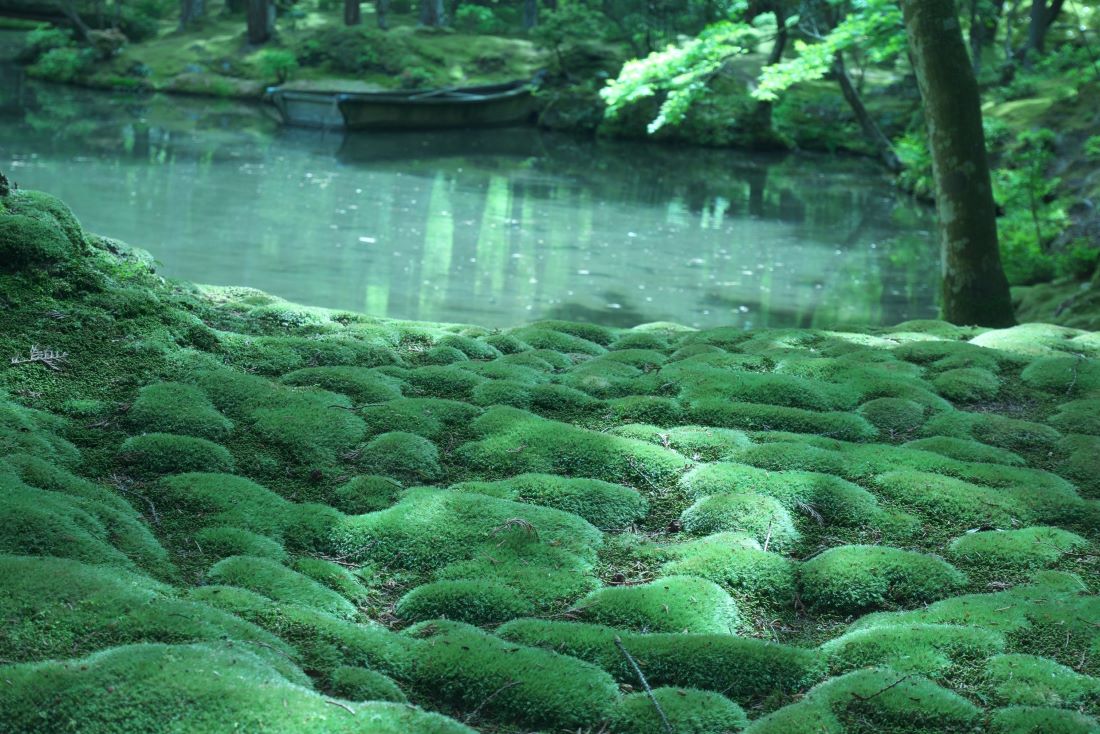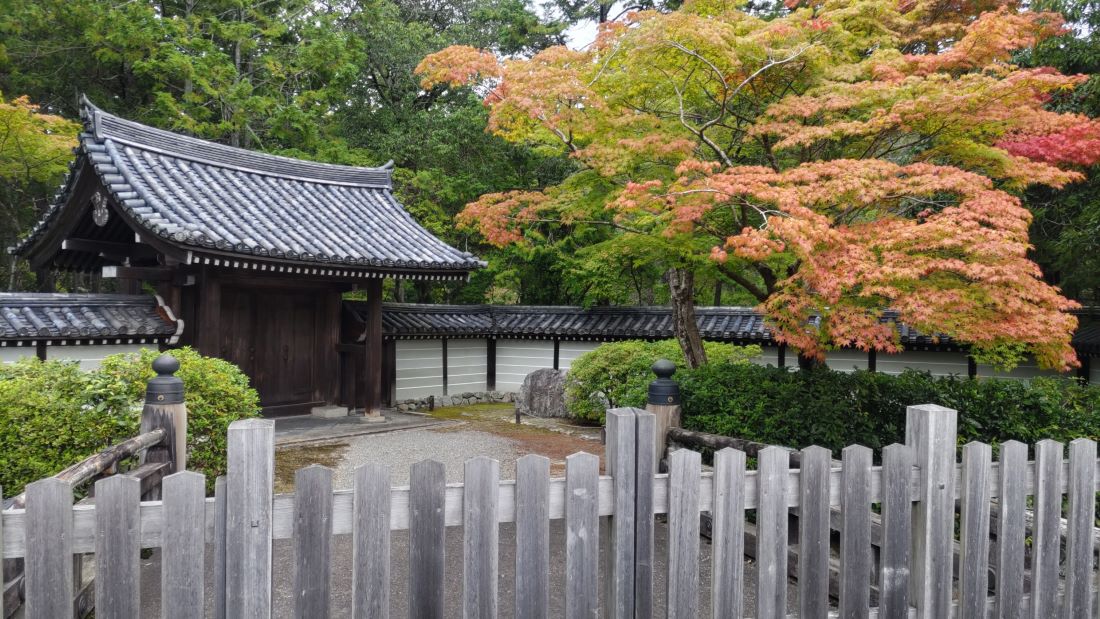Kokedera, also known as Saiho-ji, is a Rinzai Zen Buddhist temple in Matsuo, Kyoto, Japan. The temple is famous for its stunning moss garden, which is home to over 120 varieties of moss.
The temple is often referred to as the “Moss Temple” due to its beautiful and unique garden.

Kokedera was originally founded by Gyoki in the 8th century and was later restored by Muso Soseki in the 14th century.
The temple was built to honor Amitabha, a celestial Buddha who presides over the Western Pure Land and has since become a popular destination due to its breathtaking scenery and interesting history.

Visiting Kokedera requires a reservation, which can be made through the temple’s official website. Guests are required to participate in a traditional Zen meditation before being allowed to enter the moss garden.
The temple is open year-round, but the best time to visit is during the autumn and spring seasons when the moss is at its most vibrant.
History

Kokedera dates back to the Nara Period, which was over thirteen hundred years ago. The temple was founded in 731 at the request of Emperor Shomu, who wanted to build a temple in honor of his deceased wife. Kukai, a famous Buddhist monk, was responsible for designing the temple’s garden, which is now known for its stunning display of moss.
During the Heian Period, the temple was destroyed by fire and rebuilt in the Kamakura Period. In the 14th century, the temple was taken over by the Rinzai sect of Zen Buddhism, which still manages it today.

Kokedera is also known as Saiho-ji, which means “West Law Temple.” The temple was designated as a UNESCO World Heritage site in 1994 and is considered to be one of the most important cultural sites in Japan.
Features

Kokedera, also known as Saihoji Temple, is a unique destination in Kyoto, Japan. Here are some of the features that make it a must-visit:
The Moss Garden
With over 120 different types of moss, the garden at Kokedera is a true wonder. The moss covers every inch of the ground, creating a soft, green carpet that is truly mesmerizing. Visitors are not allowed to walk on the moss, but they can admire it from the path that winds through the garden. The garden is especially beautiful in the fall when the leaves of the surrounding trees turn golden and red.
The Tea Ceremony
Kokedera is known for its traditional tea ceremony, which is held in a small teahouse in the garden. You can participate in the ceremony, which involves the preparation and serving of matcha tea. The ceremony is a great way to experience Japanese culture and hospitality.
The Main Hall
The main hall at Kokedera is a beautiful example of traditional Japanese architecture. The hall is made of wood and features intricate carvings and paintings. You can enter the hall and admire its beauty.
Visiting Kokedera

To visit Kokedera, you’ll need to make a reservation in advance. The temple only allows a limited number of visitors each day, and reservations must be made by mail.
It’s important to plan ahead and make your reservation well in advance of your trip to ensure you can visit. Once you arrive at Kokedera, you’ll be given a map of the temple grounds and a guidebook to help you navigate. The temple is quite large, and there are many different areas to explore.
Be sure to take your time and enjoy the peaceful atmosphere. One of the highlights of Kokedera is the moss garden itself.

The garden is truly stunning, and you’ll be able to see many different varieties of moss up close.
There are also several small streams and ponds throughout the garden, which add to the peaceful atmosphere.

Overall, a visit to Kokedera is a unique and peaceful experience that you won’t forget. Just be sure to plan ahead and make your reservation in advance to ensure you can visit.
Etiquette and Rules
When visiting Kokedera, it’s important to follow the proper etiquette and rules to show respect for the temple and its traditions. Here are a few guidelines to keep in mind:
- Upon entering the temple, visitors should proceed directly to the temple to pay the entrance fee and begin the sutra copying.
- All visitors are asked to contribute to the observances of kito and shakyo, which involve chanting and copying Buddhist scriptures.
- Visitors should dress modestly and remove their shoes before entering the temple.
- Photography is not allowed inside the temple, and visitors should refrain from talking loudly or making noise.
- Visitors should also avoid touching any of the moss, as it is delicate and takes years to grow.
Note that Kokedera is a sacred space, and visitors should treat it as such. By following these guidelines, you can show respect for the temple and its traditions and ensure a peaceful and enjoyable visit for all.
Famous Visitors
Kokedera has been a popular destination for many years. However, it’s not just ordinary people who have visited this beautiful temple. Over the years, Kokedera has welcomed many famous visitors, including:
- Steve Jobs – the late co-founder of Apple Inc. was a big fan of Kokedera and visited the temple several times during his trips to Japan.
- Prince Charles – the heir to the British throne visited Kokedera in 1986 during his tour of Japan.
- Princess Diana – the late Princess of Wales also visited Kokedera during her trip to Japan in 1986.
- Empress Michiko – the wife of Emperor Akihito of Japan visited Kokedera in 2001.
These famous visitors have all been captivated by the beauty and serenity of Kokedera. The temple’s stunning moss garden, peaceful atmosphere, and interesting history make it a must-visit destination for anyone traveling to Kyoto.
Although Kokedera is a popular tourist attraction, it remains a place of worship and meditation for many people. Visitors are asked to respect the temple’s rules and regulations, including the dress code and photography restrictions.
The Sum Up

Visiting the Moss Temple is a uniquee experience that lets you glimpse into the beauty of Japanese gardens. The garden’s serene atmosphere and well-maintained moss-covered grounds provide a peaceful escape from the hustle and bustle of everyday life.
While the garden is closed during the winter months, you can still enjoy the beauty of Kokedera during the spring, summer, and fall. The garden’s seasonal changes offer a chance to see the moss in different shades of green, and the cherry blossoms in spring add a pop of color to the tranquil landscape.
Note that reservations are required to visit Kokedera, and visitors should plan ahead to ensure availability. Additionally, visitors should be respectful of the garden’s rules and regulations, such as not touching the moss, to help preserve the beauty of the garden for future generations.



